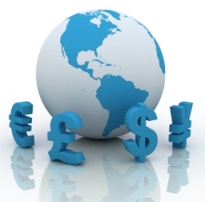The severe global recession has not stopped the world`s 1,000 largest publicly-traded corporations from increasing R&D spending in 2008, affirming the critical importance of innovation to their corporate strategies, according to a
report by consulting firm Booz & Company.
R&D outlays for these companies rose by 5.7 percent to $532 billion, even as sales were up only 6.5 percent.
The increase in 2008 R&D spend was less dramatic than 2007's gain of 10 percent. But it was only slightly less than the 7.1 percent global five-year compound annual growth rate (CAGR) for R&D.
Overall, more than two-thirds of companies maintained or increased their R&D spending in 2008, despite more than a third reporting that net income plummeted last year, according to the study.

Key findings of the report include:
Innovation is viewed as increasingly vital to corporate strategy. More than 90 percent of those surveyed say that innovation is critical as their companies prepare for the upturn, and 70 percent state their companies are either maintaining or increasing their spending on R&D in 2009.
"Reducing efforts on innovation would be similar to unilateral disarmament in wartime," said Barry Jaruzelski, partner at Booz & Company. "Now is an opportune time to build advantage over competitors, especially weaker ones that may have to skimp on R&D for financial reasons."
Companies are spending more, but more wisely. Nearly half of the respondents report becoming more risk averse in their approach to innovation, changing the filters they apply when green lighting new R&D projects.
In 2008, two-thirds of R&D spending was concentrated in three industries: computing and electronics (28 percent), health (23 percent), and automotive (16 percent).
The top 10 global R&D spenders in 2008 were, in descending order: Toyota, Nokia, Roche Holding, Microsoft, General Motors, Pfizer, Johnson & Johnson, Ford, Novartis and Sanofi-Aventis.
No industry felt the pain more than auto with nine out of the top 10 R&D spenders in the category cutting their innovation outlays in 2008. Yet the remaining 40 percent of auto companies on the list increased spending slightly.
The Software and Internet sector, on the other hand, clearly has seen the recession as an opportunity. Eight out of the industry`s top 10 R&D spenders increased their R&D spending last year.
R&D spending in the computing and electronics industry was up more than 4 percent, though the proportion of companies that increased R&D spending was essentially unchanged from last year.
Every global region increased its spending. North American, European, and Japan-based companies retained their 94 percent share of the global 1000 innovation spend.
Every region, including China and India, increased its expenditures, though they did so at slower rates.
Japan upped its allocations by just 0.5 percent, Europe by 6.3 percent and North America, 6.5 percent.





